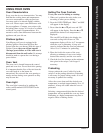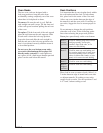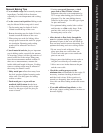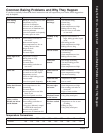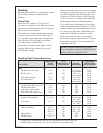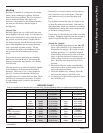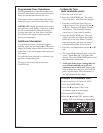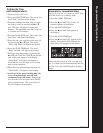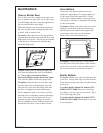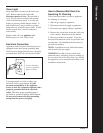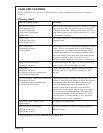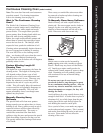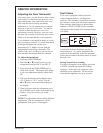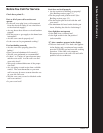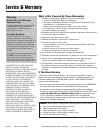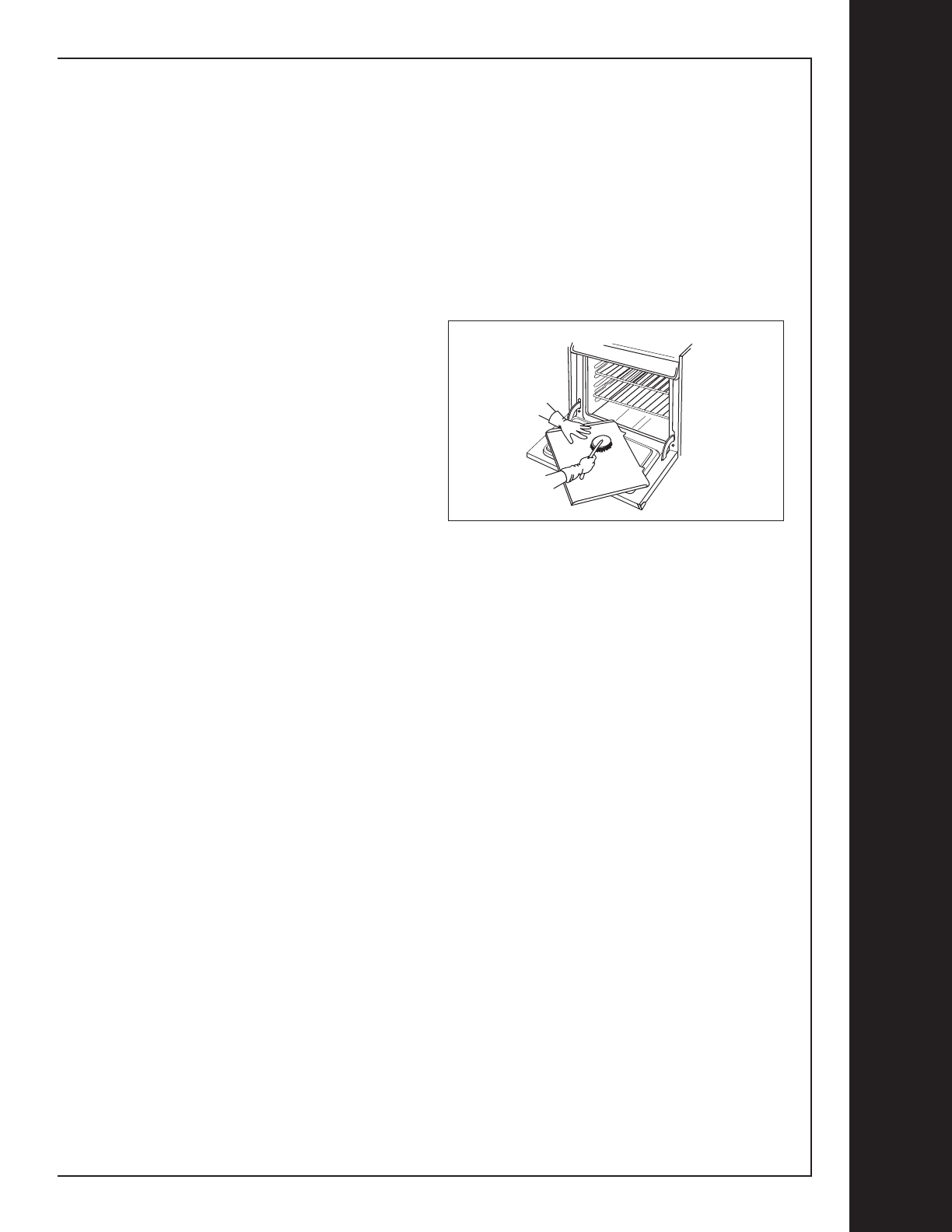
Note: The oven door liner and oven bottom are
porcelain enamel. For cleaning instructions
refer to the cleaning chart on page 18.
What Is The Continuous Cleaning
Oven?
The finish of the Continuous Cleaning Oven
contains a special catalyst and is identified by
its dark gray color, white stipple and rough,
porous texture. The rough texture prevents
grease spatters from forming beads which run
down the walls leaving unsightly streaks.
Rather, the rough texture absorbs spatters and
allows them to spread, thus exposing a larger
area to the hot oven air. The catalyst, when
exposed to heat, speeds the oxidation of soil.
Cleaning action automatically begins whenever
the oven is turned on for baking or roasting.
The oven MUST be on for cleaning to take
place – no cleaning will occur when the oven is
off. The special catalytic finish must be
exposed to hot oven air before soil will begin to
gradually reduce in size.
Factors Affecting Length Of
Cleaning Time
The higher the oven temperature, the faster the
cleaning action. The length of cleaning time
will depend on these factors: type of soil,
amount or size of soil, oven temperature and
length of time oven is in use. Time may vary
from a few minutes to several hours. Soil
deposited at the end of a cycle may still be
visible. This will usually fade with continued
oven use until the soil gradually disappears or
can be wiped up manually. The oven will
appear presentably clean, even though some
spatters may be present.
Manually Cleaning Heavy
Spillovers
The special finish will clean most spatters
during normal oven use unless there is a heavy
buildup of soil. Heavy spillovers such as pie or
casserole boilovers will not clean ef
fectively
without some manual help.
The crusty or
varnish-like stains that form from these
spillovers clog the pores and prevent the special
finish from being exposed to the hot oven air.
This greatly reduces the cleaning effectiveness
of the finish.
These crusty or varnish-like stains must either
be removed or broken up before cleaning can
effectively take place.
To Manually Clean Heavy Spillovers
Brush off heavy soil with a nylon brush or
plastic pad. Do not use paper towels, cloths or
sponges, for the oven walls are porous and
particles of these materials will rub off on the
walls. Rinse area with clean water only.
Hints
Brittle crusts or stains can be loosened by
gently tapping stain with a wooden or plastic
utensil. Brush away any loose soil that flakes
off. Varnish-type stains usually need to be
softened with a small amount of water or damp
cloth. Remaining soil will gradually reduce
with continued oven use at normal baking
temperatures.
Do not use any type of oven cleaner,
powdered cleansers, soap detergent or paste
on any continuous cleaning surface. Also, do
not use any abrasive materials, steel wool,
sharp instruments or scrapers, for they will
damage the finish.
Avoid spillovers by using utensils that are large
enough to hold food. A cookie sheet or piece of
aluminum foil, just a little lar
ger than the pan,
can be placed on the rack directly below the
rack holding the utensil to catch spills.
Over a period of time, wear marks may appear
on the embossed rack supports. This is normal
and results from sliding the racks in and out of
the oven. Wear marks will not affect the
cleaning of the oven.
Care and Cleaning – Cleaning Chart and Continuous Cleaning Oven
PAGE 19
Continuous Cleaning Oven (select models)



